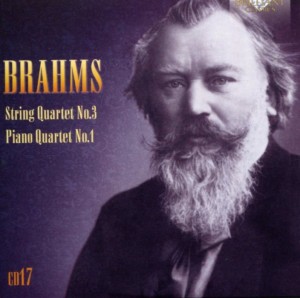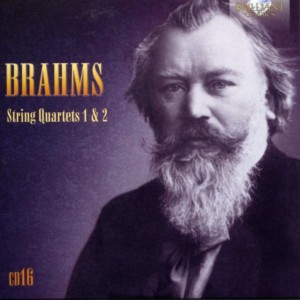This string quartet is more like it!
Or maybe I’m just hopped up on Tim Hortons’ coffee and Boston Cream donuts.
But something feels different about String Quartet No. 3 in B flat Op. 67.
Movement I (“Vivace”) is lively and fun. Even the much slower Andante of Movement II isn’t putting me to sleep (I’m not ruling out the coffee, though).
Nope. Movement III (“Agitato – Allegretto non troppo”) is also interesting, even though I feel kind of…oh, I don’t know…agitated.
Finally, Movement IV (“Poco allegretto con variazioni”) finishes up Brahms’ third string quartet in fine form, sounding very Baroque like. Plus, there’s that humorous-sounding pizzicato happening. Never fails to put a smile on my face.
Once again, the performers on this string quartet are:
Tokyo Quartet
Peter Oundjian, Kikuei Ideka violins
Kazuhide Isomura viola
Sadao Harada cello
From its entry on Wikipedia:
The String Quartet No. 3 in B flat major, Op. 67, was composed by Johannes Brahms in the summer of 1875 and published by the firm of Fritz Simrock. It received its premiere performance on October 30, 1876 in Berlin. The work is scored for two violins, viola, and cello, and has four movements:
Brahms composed the work in Ziegelhausen, near Heidelberg, and dedicated it to Professor Theodor Wilhelm Engelmann, an amateur cellist who had hosted Brahms on a visit to Utrecht. Brahms was at the time the artistic director of the Vienna Gesellschaft der Musikfreunde. The work is light-hearted and cheerful, “a useless trifle,” as he put it, “to avoid facing the serious countenance of a symphony”.
Brahms was 42 when he composed this string quartet.
The second composition Continue reading


